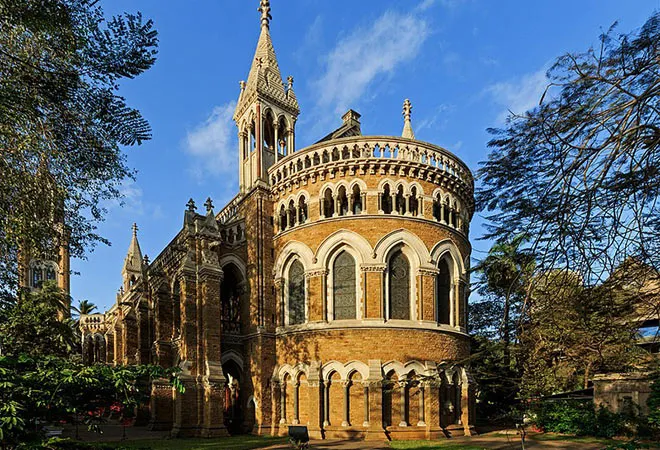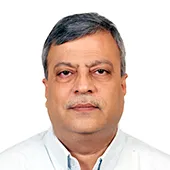-
CENTRES
Progammes & Centres
Location
An ‘outer shell’ approach to setting the affairs of the Mumbai University right can have larger lessons for India’s public universities.

Over a period of time, the University of Mumbai has slid into a chaotic, dysfunctional morass. The process out of this rut will require concerted systematic effort, along with a clear long-term vision. This article suggests ‘1-2-3-4-5 approach’ to stem the rot. This approach will provide an ‘outer shell’ which will need to be fleshed out for a meaningful and substantial strategy. While this is a commentary on the current state of the University of Mumbai, several of the points suggested are highly relevant for State universities across India.
By way of preamble, it is apt to say that the challenges before higher education in India may be summed up with the help of two triads comprising Adequacy, Equity, Efficiency and Autonomy, Flexibility and Quality-Excellence. What follows is also importantly informed by two tenets – one size doesn’t fit all and decentralisation qualified by subsidiarity.
One: Not unlike the Alcoholics Anonymous (AA) who begin by admitting the fact that they have been beaten by addiction to alcohol, in our case, the leadership at the top must recognise the stark situation and lay out a modular and well thought-out path that will slowly but surely get us out of the mess. Indeed, it needs to be recognised upfront that, in any case, there is no magic wand and things will likely get worse before they get better.
Two: There should be a two-track approach. The first track considers the basic provisioning of infrastructure, that is, adequate materials, teachers, classrooms with facilities including multimedia projectors and computers (for teaching) to all the stakeholders so that it is adequate to provide the basic services of teaching at minimal acceptable level to all the students across all departments.
The second track deals with imparting excellence. This implies resources to innovate in teaching and carry out quality research. Due to scarcity of financial resources as well as availability of human resources, this cannot be done universally. This track deals with all the provisioning of infrastructure and services that are essential to get the departments, faculty and students get on to the path of excellence and indeed attain it. This will perforce be a selective process and will require a basic threshold level to be attained by the relevant stakeholders.
Three: This amplifies the ‘one size does not fit all’ tenet. Whether it is the university departments, colleges or students, it is useful to have a three-way classification – laggards, average and excellent, with each category being meted out a different treatment. The first will require handholding and nurturing with paternal care. The second category will call for universal allocation of resources, supervision and encouragement on specifics. The third category, which is excellent, will need to be let go to fly free through true autonomy. There can be a periodic review but absolutely no interference. This will encourage progressive movement of the laggards to gradually achieve excellence.
Four: Here, the tenet related to decentralisation comes to the fore. There are normally four verticals that self suggest themselves in any university. These are academic development, administration, finance and examinations. Clearly, IT leveraging is crucial in this day and age and is all pervasive across the four verticals. The details will have to, however, be fleshed out meticulously.
Five: The sheer size of the public universities and their affiliating organisations (750 Colleges plus 150 research institutions spread across several districts in the case of the University of Mumbai) creates a veritable quagmire. It clearly needs downsizing (even considering what is achievable with IT leveraging). Apart from size, the heterogeneity of students and faculty is a major issue for academic development.
In the case of the University of Mumbai, it should be the mother-load for five universities. One for Mumbai and Mumbai suburban districts, second for Thane and Palghar districts, third for Raigad district and fourth for Ratnagiri and Sindhudurg districts.
The fifth should be a unitary university at its Kalina Campus (like the JNU) aimed at integrated and postgraduate teaching with emphasis on research. Within Mumbai and its suburbs, there could be a cluster universities formed based on single managements or geographical contiguity. Should the brand name of the presidency the University of Mumbai be of import, we could name them (like University of Paris) University of Mumbai I, II, III, IV, V.
However, the above changes will be effective only if certain prerequisites are met by some of the other players, most importantly the State government. Obviously political interference must be kept to a minimum. More importantly, the government must help the state universities by truly treating them as autonomous and endowing them with an act that is least intrusive in terms of permissions from the government.
Resources have to be adequately provided so that staff vacancies are automatically filled and assets are maintained. This presumes that the political leadership has to be aware and recognise the importance of higher education in the long run. Given the scarcity of resources, the government may well take the position that maintenance and development of the higher education sector, however important, cannot be afforded (in terms of priorities and exigencies). The government then ought to provide bare minimum but adequate resources to run the University system and then provide liberal terms and conditions to those within the state and the private sector to raise additional resources so that they can move forward on their own, hopefully towards excellence and more.
The views expressed above belong to the author(s). ORF research and analyses now available on Telegram! Click here to access our curated content — blogs, longforms and interviews.

With a distinguished academic career spanning four decades Prof Abhay Pethe has held several positions in the University of Mumbai's Department of Economics such as ...
Read More +